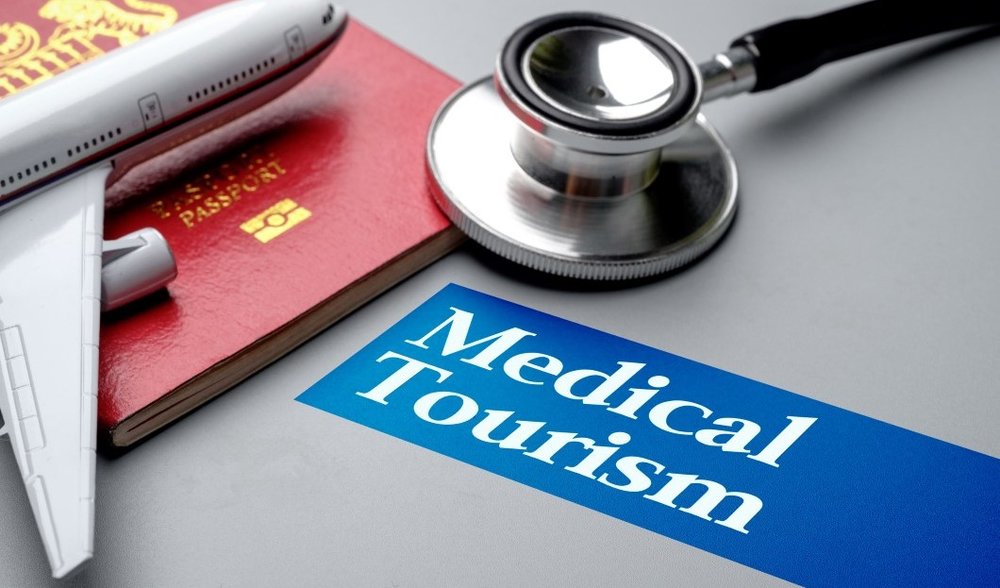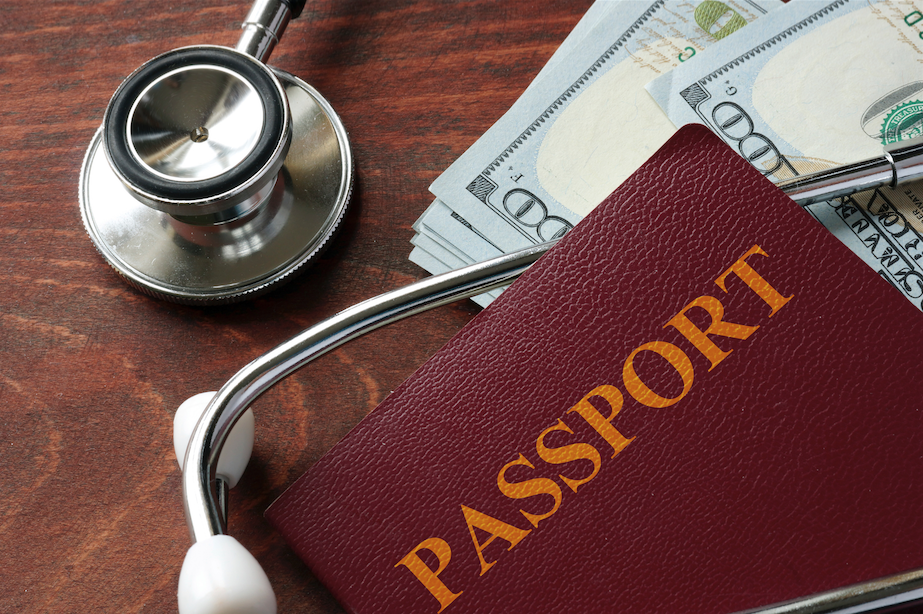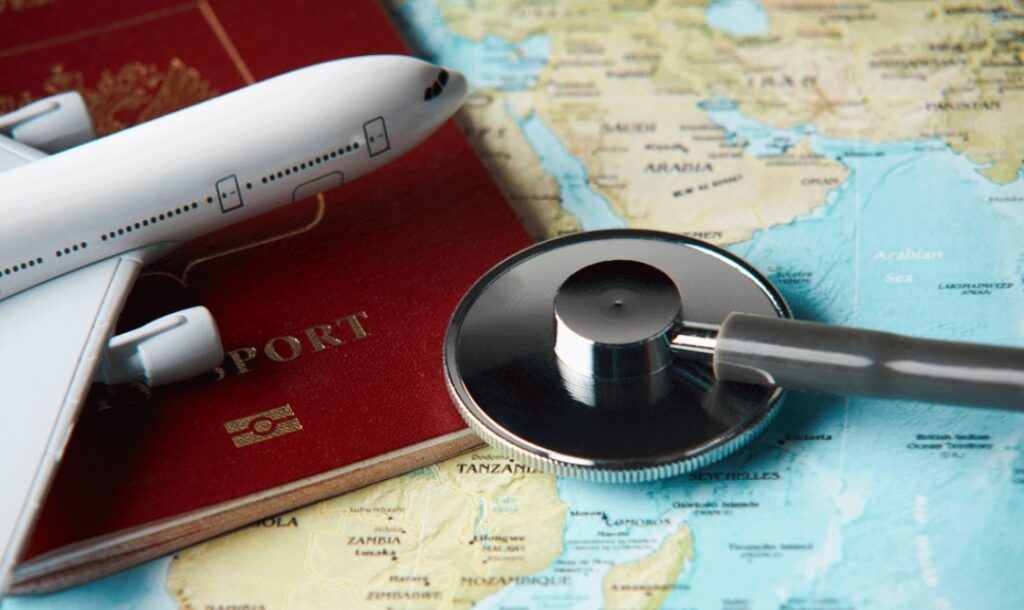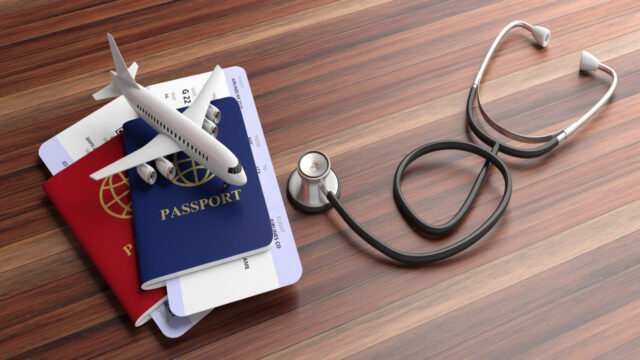Medical tourism is the practice of traveling to a different state or country to obtain medical treatment or surgery. Many people have become attracted to it because of how cheaper some procedures are in other places than where they live. For some, the desire to save money is enough motivation, but for others, they are just seeking more advanced care and expertise and/or nicer amenities offered by top hospitals outside of where they live. Some factors to consider when it comes to medical tourism are costs of procedures vs. quality of care, the risk of choosing an unregulated facility, and loss of privacy associated with flying to a foreign country for surgery.
Choosing to go abroad for medical treatment can also be called “medical vacationing” and you may hear it referred to as “going on holiday with your health” as well. A medical tour will typically offer different types of procedures at highly discounted rates, especially when compared with high-priced countries. However, this can come at a cost. You will likely forgo some of the luxuries available to you in your own state or country, such as high-quality food and accommodations. Depending on your destination, you may also be at risk of contracting an infection or other illness.
Since medical tourism has become more popular, the industry has grown faster than the ability of governments to regulate it. This means that there are a lot of “fly by night” clinics and hospitals that have popped up to take advantage of the influx of tourists seeking medical care. Before choosing a destination, do your research to ensure that the hospital or clinic you are considering is reputable and has a good track record.
When Would You Want To Do Medical Tourism?

There are a few different scenarios in which medical tourism might make sense for you:
1. If you are uninsured or underinsured and need to have a major procedure done, traveling to another state or country where the cost of surgery is much lower than where you currently reside can save you a lot of money.
2. If you are looking for a more luxurious experience than what is available to you in your home state or country, some top hospitals abroad offer high-end amenities and expertise that are not available where you reside.
3. If you are looking for a more advanced or experimental procedure that is not yet available where you live, seeking treatment abroad could be a good option.
4. If you need to access the highest level of medical expertise regardless of price. For example, a platelet rich plasma infusion to help repair your joints.
5 main factors to consider if you choose to go this route:
1. Cost

One of the main reasons people choose to do medical tourism is because procedures can be much cheaper in other countries. For example, a hip replacement that would cost $43,000 in the United States could cost as little as $7,000 in India. This difference in price can be attributed to a number of factors, including the cost of living and wages in different countries and the availability of advanced medical technology.
2. Quality of Care and Expertise

While it is possible to find high-quality hospitals and clinics abroad, not all medical tourism destinations are created equal. Before choosing a destination, do your research to make sure that the hospital or clinic you are considering is reputable and has a good track record.
If you are seeking the best in your country, or indeed the world, for a particular procedure, then be prepared to spend accordingly.
3. Risks

Like with anything, there are risks associated with medical tourism. One of the biggest risks is that you may choose an unregulated facility that does not meet your expectations in terms of quality of care. Additionally, you could contract an infection or other illness while in another country, or be at risk for something like identity theft or robbery. Before you leave for your medical vacation, make sure that you are up to date on all of your vaccinations and have travel insurance.
4. Treatment Types

In addition to typical surgical procedures, some popular options include stem cell therapy, fertility treatments, and dental care. If you need a procedure done but aren’t sure what kind of treatment would be best for you, a medical tourism consultant can help you find the right destination and hospital for your needs.
5. Medical Tourism Can Be Risky

As with anything, there are risks associated with medical tourism. One of the biggest risks is that you may choose an unregulated facility that does not meet your expectations in terms of quality of care. Other issues that can increase your risk of complications include:
- Infectious Disease: If the location has poor sanitation or you come into contact with a common disease in that region, you may be at risk of contracting an infection.
- Quality of Care: Not all medical facilities abroad are created equal, so it is important to make sure that the one you choose is reputable.
- Patient Safety: If something goes wrong with your surgery or you have a negative reaction to the treatment, you may not be able to get the help you need.
- Communication challenges: If you do not speak the language of the country you are visiting, it may be difficult to communicate with your medical team.
- Legal Issues: If something goes wrong with your procedure or you are injured, you may not be able to sue the hospital or doctor in a foreign country. You would need to take legal action in the United States.
Different types of Procedures and their Pricing in the USA
Dental procedures are one of the most popular types of treatments sought by medical tourists. The cost of a dental procedure in the United States can vary widely, depending on the type of treatment you receive. For example, a simple filling may cost around $100, while a more complex procedure like a root canal would cost between $200 and $500.
Surgeries like heart surgery can cost more than $100,000 in the United States. However, the average cost in India for heart surgery is about $2,500. While there are plenty of medical procedures that are less expensive abroad, some are also more expensive. For example, a knee replacement in the United States can cost anywhere from $15,000 to $80,000, while the same procedure in India will cost about $5,000.
When is Medical Tourism a Good Option?

There are a few times when medical tourism is a particularly good option. If you are uninsured or have a high-deductible insurance plan, traveling for medical care can be a way to get the care you need at a lower cost. Additionally, if you have a rare condition or a chronic illness, you may be able to get better care in another country. Another time when medical tourism is a great option is when you are having an experimental procedure. While some countries may not allow certain types of procedures, others may allow them under clinical trials.



